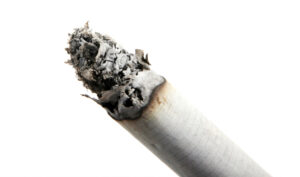Header logo
header top contact widget
Learn More Blog
April is National Oral Cancer Awareness Month
Posted on Apr 12, 2022 by William J. Claiborne, DDS MS
April is recognized as National Oral Cancer Month. It provides an annual opportunity for the medical and dental communities to remind the American population of the dire consequences that can be brought on by this cancer.

Oral cavity and oropharyngeal (which includes the base of the tongue and soft palate) cancers occur most often in the tongue, gums, floor of the mouth, tonsils, and other parts of the mouth and oropharynx. These cancers also occur in the lips and salivary glands (typically those in the roof of the mouth).
According to the American Cancer Society’s, recent statistics of oral and oropharyngeal (throat) cancers include:
• In 2022, an estimated 54,000 new cases will occur with about 11,230 deaths.
• The average age of people diagnosed with these cancers is 63, but over 20% (1 in 5) of cases occur in patients under the age of 55.
• These cancers are more than twice as common in men as in women and slightly more common in white people than black people. Overall, the lifetime risk of developing oral cavity and oropharyngeal cancer is about 1 in 60 for men and 1 in 140 for women.
Although the death rate and new cases of oral cavity has risen only slightly over the past 20 years, there has been an increase specifically in oropharyngeal cancers associated with an human papillomavirus (HPV) infection in both men and women. These HPV-positive cancers tend to act differently than HPV-negative cancers.
A number of other factors can affect your risk for developing mouth and throat cancer. These include:
Tobacco and alcohol use – Tobacco use is one of the strongest risk factors for head and neck cancers, including oral cavity and oropharyngeal cancer. The risk for these cancers is much higher in people who smoke than in people who don’t. Most people with these cancers have a history of smoking or other tobacco exposure, like chewing tobacco. The more you smoke, the greater your risk. Smoke from cigarettes, pipes, and cigars all increase your risk of getting these cancers. Some studies indicate that long-term exposure to secondhand smoke might increase the risk of these cancers. 
Oral tobacco products (snuff, dip, spit, chew, or dissolvable tobacco) are linked with cancers of the cheek, gums, and inner surface of the lips. Using oral tobacco products for a long time is linked to a very high risk. These products also cause gum disease, destruction of the bone sockets around teeth, and tooth loss.
For people who continue to smoke and use oral tobacco products after cancer treatment, their risk of developing a second cancer in the mouth, throat, larynx (voice box), lung and other organs greatly increases.
Drinking alcohol increases the risk of developing oral cavity and oropharyngeal cancers. Heavy drinkers have a higher risk than light drinkers. Smoking and drinking alcohol together multiplies the risk of these cancers. The risk of these cancers in people who drink and smoke heavily is about 30 times higher than the risk in people who don’t smoke or drink.
Human papillomavirus (HPV) infection – HPV is a group of more than 150 types of viruses called papillomaviruses. Some of these viruses cause a type of growth commonly called a papilloma or wart.
Infection with certain types of HPV can cause some forms of cancer, including cancers of the penis, cervix, vulva, vagina, anus, mouth, and throat. HPV type 16 (HPV16) is the type most often linked to cancer of the oropharynx, especially those in the tonsil and base of tongue.
The number of oropharyngeal cancers linked to HPV has risen greatly over the past few decades due to becoming more common in younger people who have a history of multiple sex partners (including oral sex). This is true for even those with no history of alcohol abuse or tobacco use.
Gender – Oral cavity and oropharyngeal cancers are twice as common in men than in women. HPV-related oropharyngeal cancers are also seen more often in men.
Poor nutrition – Studies have found that a diet low in fruits and vegetables is linked with an increased risk of cancers of the oral cavity and oropharynx.
Being obese or overweight – Too much body weight appears to increase the risk of these cancers. It is advised that eating more plant-based foods, such as non-starchy vegetables and whole fruit, may help people lose weight as well as reduce their risk of oropharyngeal and laryngeal cancer.
Age – Because oral and oropharynx cancers can take many years to develop, they’re not common in young people. Most patients with these cancers are older than 55 when the cancers are first detected. HPV-linked cancers tend to be diagnosed in people younger than 50.
Sunlight – Cancers of the lip are more common in people who have outdoor jobs where they are exposed to sunlight for long periods of time.
Genetics – People with certain genes have a higher risk of mouth and middle throat cancer.
Signs and symptoms of mouth cancer may include:
• A lip or mouth sore that doesn’t heal within two weeks
• White or reddish patch on the inside of the mouth
• Loose teeth
• A growth or lump inside the mouth
• Mouth pain
• Ear pain
• Difficult or painful swallowing
Although oral cancer may first make itself known by a spot on the lips, inside of cheeks or on (or under) the tongue, oropharyngeal cancer can exist without symptoms. When symptoms do arise, they may be:
Mass felt in the neck or in the back of the throat
Difficulty or pain with swallowing
Muffled voice
Ear pain
Throat pain or sore throat
A periodontist is a dental specialist who has advanced skills in treatment involving the gums, including gum disease, gum reshaping and in the placement of dental implants. This specialist can also detect suspicious areas that may be early warning signs of oral or oropharyngeal cancer. Through a painless process, the examination can determine is a biopsy is needed for a thorough testing process. The earlier the treatment, the less involved the process will be. Too, early treatment helps to increase survival rates.
As an Asheville NC periodontal specialist, please react promptly to any signs or symptoms associated with these cancers. And, with this knowledge, make it your goal to share this information with a smile you love.
Recent Posts
Categories
Archives
- September 2024
- August 2024
- July 2024
- June 2024
- May 2024
- April 2024
- March 2024
- February 2024
- January 2024
- December 2023
- November 2023
- October 2023
- September 2023
- August 2023
- July 2023
- June 2023
- May 2023
- April 2023
- March 2023
- February 2023
- January 2023
- December 2022
- November 2022
- October 2022
- September 2022
- August 2022
- July 2022
- June 2022
- May 2022
- April 2022
- March 2022
- February 2022
- January 2022
- December 2021
- November 2021
- October 2021
- September 2021
- August 2021
- July 2021
- June 2021
- May 2021
- April 2021
- March 2021
- February 2021
- January 2021
- December 2020
- November 2020
- October 2020
- September 2020
- August 2020
- July 2020
- June 2020
- May 2020
- April 2020
- March 2020
- February 2020
- January 2020
- December 2019
- November 2019
- October 2019
- September 2019
- August 2019
- July 2019
- June 2019
- May 2019
- April 2019
- March 2019
- February 2019
- January 2019
- December 2018
- November 2018
- October 2018
- September 2018
- August 2018
- July 2018
- June 2018
- May 2018
- April 2018
- March 2018
- February 2018
- January 2018
- December 2017
- November 2017
- October 2017
- September 2017
- August 2017
- July 2017
- June 2017
- May 2017
- April 2017
- March 2017
- February 2017
- January 2017
- December 2016
- November 2016
- October 2016
- September 2016
- August 2016
- July 2016
- June 2016
- May 2016
- April 2016
- March 2016
- February 2016
- January 2016
- December 2015
- November 2015
- October 2015
- September 2015
- August 2015
- July 2015
- June 2015
- May 2015
- April 2015
- March 2015
- February 2015
- January 2015
- December 2014
- November 2014
- October 2014
- September 2014
- August 2014
- July 2014
- June 2014
- May 2014
- April 2014
- March 2014
- February 2014
- January 2014
- December 2013
- November 2013
- October 2013
- September 2013
- August 2013
- July 2013
- June 2013
- May 2013
- April 2013
- March 2013
- February 2013
- January 2013
- December 2012
- November 2012
- October 2012
- September 2012
- August 2012
- July 2012
- June 2012

